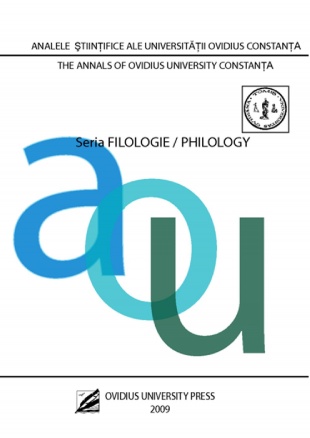Volpone – Animal and Moral Monstrosity
Volpone – Animal and Moral Monstrosity
Author(s): Mihaela Ilinca TanaseleaSubject(s): Language and Literature Studies, Studies of Literature
Published by: Ovidius University Press
Keywords: Ben Jonson; early modern drama; grotesque body; medieval bestiaries; monstrosity; Volpone;
Summary/Abstract: This essay examines the ways in which the concepts of monstrosity and themonstrous are dealt with throughout the dramatic interaction in Ben Jonson’s Volpone.Whereas, on a first reading of the play, monstrosity and the monstrous are perceived asnotions which relay to matters of animal-like physicality, of mere grotesque appearance, itis really the ethical ambivalence of its characters that formulates the suggestion thatmonstrosity essentially bears upon moral corruption. Greed, lust, dishonesty, jealousy arevices which relate to an understanding of the monstrous and monstrosity congruent to theRenaissance view upon these notions as a matter of psychological and moral deformityrather than a non-figurative medieval perspective upon the concepts. As a result, in BenJonson’s Volpone, animal imagery conveying altered animal-like features merely representsan element of comedy which serves as an amusement trigger, in order to entertain theaudience and achieve dramatic jesting, while moral monstrosity is actually a form ofchallenging the social notions of physical monstrosity of the period by opposing themonstrosity of the mind through monstrous exaggerations of the body. The human-likemental monstrosity is enhanced through animal-like features of the characters and theirsymbolic names. The beast imagery is wisely exploited with the intention of creating anevocative reflection of a lustful Venice and its felonious, immoral inhabitants. The motif ofthe medieval bestiary is accordingly employed by assigning beast-like features to almostevery character who adopts the corresponding behaviour of the animal that gives its name:Volpone, the sharp-witted fox, a depraved hedonist; Mosca, the deceiving, unscrupulousparasite; and the three legacy-hunters, Voltore, Corbaccio and Corvino—the insatiablegreed-driven prey birds. The end of Jonson’s comedy unfolds in a moralistic manner, whereVolpone and the other legacy-hunters’ mischievous nature is finally penalized. Their animallike depictions—avarice, the continuous illicit chase for fast and easy money—generate theevil nature of the dramatic figures, which epitomize moral monstrosity.
Journal: Analele Universităţii Ovidius din Constanţa. Seria Filologie
- Issue Year: XXX/2019
- Issue No: 2
- Page Range: 63-74
- Page Count: 12
- Language: English

